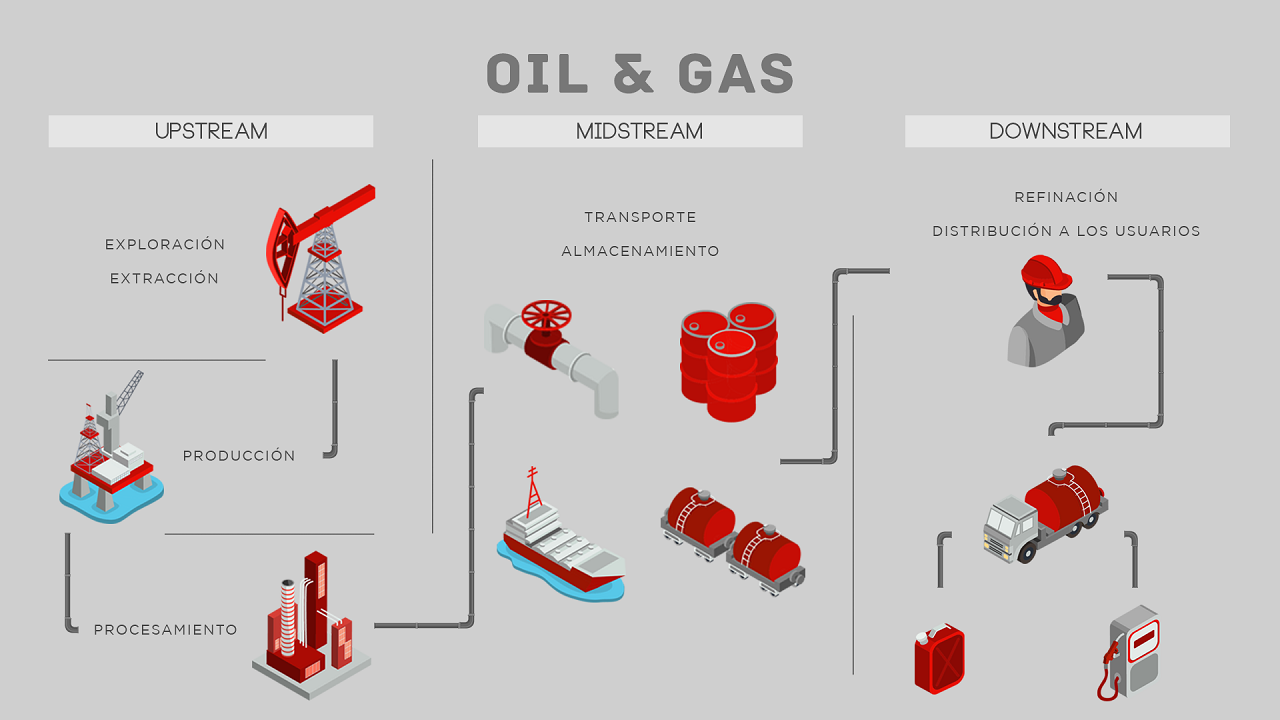
In the following article we take a tour of the different actions that are carried out throughout the oil and gas supply chain, from the previous studies until the raw material finally reaches the end customers.
It is normally divided into three segments. The Upstream sector finds and produces crude oil and natural gas. The Midstream handles the processing, storage, and transportation of energy products. And the Downstream sector includes refineries, points of sale and natural gas distribution companies. The detail:
Upstream
The first stage in obtaining hydrocarbons is exploration. In it, the areas of the oil fields are searched and the potential of their reserves is evaluated to determine the economic viability of the project.
Once it is decided to continue with the project, a large investment in engineering is necessary (well drilling, facilities, civil works, platforms, etc.) to later start the production phase.
Midstream
To respond to the demand, we have two main forms of transportation: through pipelines or through ships, each one with its advantages and disadvantages, although they are complementary and sometimes both are used during the transfer.
Ships have the advantage of allowing the transport of larger volumes, reaching up to 550,000 deadweight tons, however, the cost per ton is higher than in the case of pipelines.
The latter, on the other hand, require a greater investment for their construction and are in charge of supplying the crude from the deposit to the refinery or to a maritime terminal. They generally have a diameter ranging from 150 mm to 915 mm (6″ and 36″, respectively).
Downstream
In search of having a better product response, it is necessary to submit the crude extracted from the deposits to a series of processes that will convert it into fuels, fuels and other derivatives.
Among these products are liquefied petroleum gases, propane and butane; gasoline, kerosene, gas oil and fuel oil. In addition to these fuels, lubricating oils, asphalts or by-products such as sulfur or paraffins are also obtained.
Some of the processes to which crude oil is subjected for its refining are: atmospheric distillation, catalytic reforming of naphthas, hydrodesulfurization or vacuum distillation.
As the last link in the chain, we have the distribution and sale of petroleum products. It covers transportation and storage from refineries or ports to the end customer and is divided into two stages: primary and secondary or capillary distribution.
Image: Idealex.press






